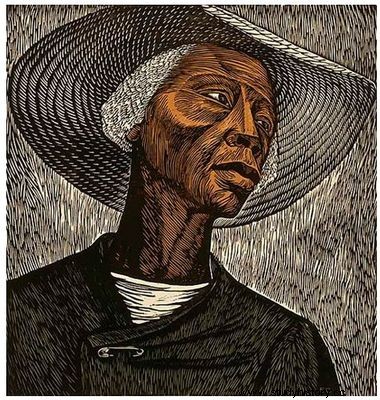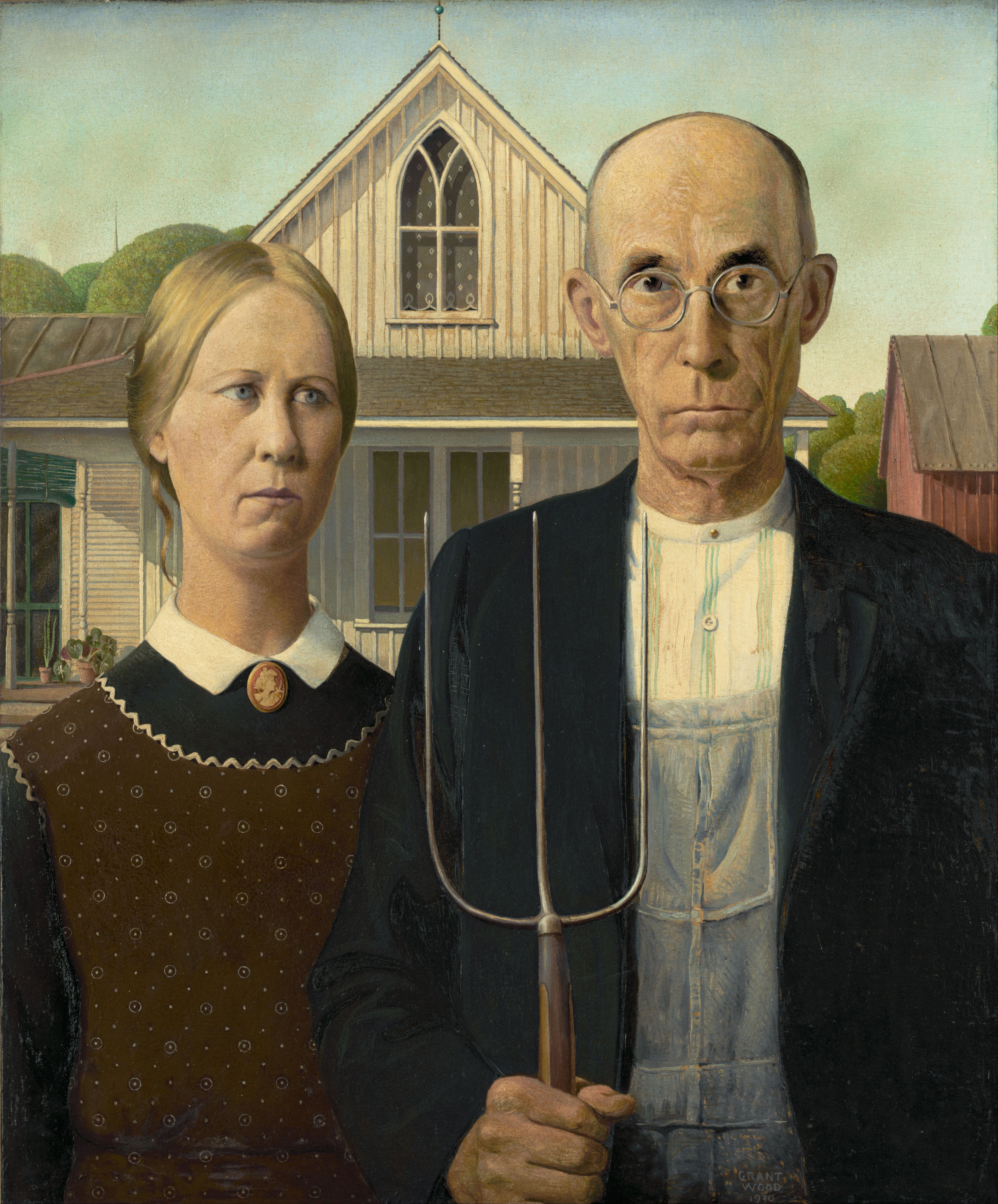African-American sculptor and artist, Elizabeth Catlett (1915 – 2012) mixes the abstract and the figurative and African and Mexican influences; she strives to make her art the vector of political messages and addresses in particular the lives of black women in the United States.
Descendant of slaves

Born on April 15, 1915 in Washington, United States, Elizabeth Catlett is the youngest of three children. Both of her parents work in education, but she does not know her father who died before she was born. His mother has to combine several jobs to raise her children.
Elizabeth is descended, through her father as well as her mother, from freed slaves. The memory of slavery, abolished fifty years earlier, is vivid in people's minds; his grandmother tells him about the captures in Africa, the inhuman crossings of the Atlantic, the sufferings of slavery on the plantations.
First black woman to graduate from fine arts.
Fascinated by a wooden bird sculpture made by her father, Elizabeth Catlett took an early interest in art. She began taking art lessons in high school, from a descendant of abolitionist activist Frederick Douglass. Upon application, Elizabeth is accepted into the Carnegie Institute of Technology in Pittsburgh, Pennsylvania, but the school refuses her admission upon discovering that she is black.
Elizabeth then did her undergraduate studies at Howard University in Washington, an institution for African Americans. She studied there in particular with the painter Lois Mailou Jones and the writer Alain Locke, both active during the Harlem Renaissance. In 1937, Elizabeth graduated with flying colors. She then moved to Durham, a city in North Carolina where her mother was from, and took a job as a high school teacher there. The job quickly frustrates her; as a black professor, she receives a lower salary and her actions for equal pay remain in vain.
Discovering the work of the realist painter Grant Wood, author of the famous painting American Gothic , Elizabeth resumed graduate studies at the University of Iowa. She trained there in sculpture and painting with Grant Wood, and learned to create lithographs, to work with wood, stone, clay and bronze. His teacher encourages his students to draw inspiration from what they know best. Elizabeth then begins to tell in her art the daily life of black women and children in the United States. In 1940, she was one of the first three fine arts graduates at the University of Iowa; she is also the first black woman to receive this diploma.

Professor and student
After graduation, Elizabeth Catlett moved to New Orleans to work at Dillard University. While working, she continues to train. In the summer, she studies ceramic art at the Art Institute of Chicago and lithography at South Side Community Art Center from Chicago. It was in this city that she met the painter Charles Wilbert White, whom she married in 1941.
The couple moved to New York, where Elizabeth continued to work as a teacher while refining her artistic apprenticeship; at the Art Students League of New York , who notably saw Louise Bourgeois pass, she received private instruction from the Russian sculptor Ossip Zadkine. It was he who encouraged Elizabeth to mix abstract elements into her figurative work. In New York, the couple frequented many artists and intellectuals from the black community, including writer Gwendolyn Bennett and activist and intellectual W. E. B. Dubois.
A life in Mexico
In 1946, Elizabeth Catlett received a scholarship from the Rosenwald Fund to travel to Mexico with her husband. She accepts him and moves to Mexico City, but divorces Charles soon after. Determined to make her art the support of her militant commitments, Elizabeth joined the Taller de Gráfica Popular (popular graphic workshop), a collective that uses art to promote and advance social causes. Highly productive, the workshop is steeped in a highly politicized artistic atmosphere. At the Taller de Gráfica Popular , Elizabeth meets the painter Francisco Mora, whom she quickly marries. The couple will have three sons, Francisco, Juan and David.
In Mexico, Elizabeth continued to train and studied woodcarving and ceramics at the Escuela Nacional de Pintura, Escultura y Grabado “La Esmeralda” . She, who had initially trained in fine arts to become a teacher, invested herself more and more deeply in her art, which gradually mixed with Mexican influences. During her stay in Mexico, she also met the painter Frida Kahlo.
The political commitments of the members of Taller , within the Communist Party in particular, but also her own activism during a railroad strike in Mexico City, led Elizabeth to be placed under surveillance and then banned from entering the United States. She cannot visit her mother, who has fallen ill, before she dies. In 1962, she renounced her American citizenship to become Mexican. She did not regain her American citizenship until 2002.
A committed art
“Art for me must develop from a necessity within my people. It must answer a question, or wake somebody up, or give a shove in the right direction — our liberation. »
(My art must be born out of necessity for my people. It must answer a question, wake someone up, or push in the right direction – our liberation.)
Beyond aesthetics, Elizabeth Catlett sees art as a way to express her struggles, to help change mentalities, to inspire and support her community. A conviction that is even more rooted in his art within the Taller , with whom she worked until 1966. Feminist and civil rights activist, Elizabeth worked in particular to fill the lack of female role models. She creates lithographs representing African-American celebrities, including Harriet Tubman, Angela Davis and Phillis Wheatley. In Sacramento, she made a large sculpture of activist Sojourner Truth.
Essentially realistic but sometimes including abstract elements, Elizabeth's sculptures and lithographs combine African and Mexican influences. Beyond historical figures, her work explores themes such as motherhood, social injustices, the human condition, the strength of black women.
Her committed art attracted the attention of feminist and anti-racist movements, and more and more exhibitions began to be devoted to her, mainly in the United States. During her lifetime, Elizabeth will exhibit individually more than 50 times. She also received many awards and honors during her career.
End of career
After retiring as a teacher, Elizabeth Catlett moved to New York with her husband. She did not stop working on her art and producing committed works, until her death.
In 2007, the president of Carnegie Mellon University, Jared Leigh Cohon, discovers that Elizabeth was denied access to her school when she was young. The following year, he presented her with an honorary doctorate and a personal exhibition was organized on the school campus.
Elizabeth Catlett died in April 2012, at the age of 96.
